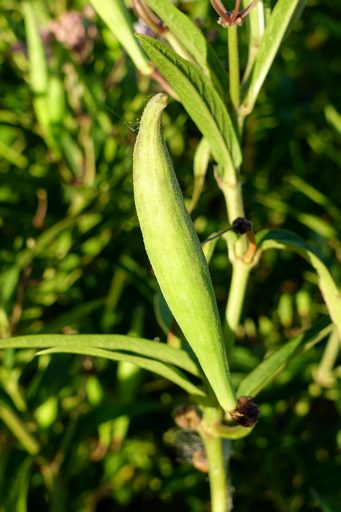

Repeat this for one week, alternating between the fridge and the freezer. The next day place this in the freezer for one day. Put this in a labelled, sealed plastic bag and store in a refrigerator for one day. Start at least 5 weeks before outdoor night temperatures are reliably in the 10 C (50 F) range. 30 seeds per pack - 90 seeds per gramĪll Wildflower Farm seeds are hardy through growing zone 3, organic and non-GMO.Ĭold, moist stratification. Start some Asclepias syriaca seeds this year to attract Monarchs to your garden!Īpprox. Grows in any well-drained soil, it does spread rapidly by rhizomes so it is best planted in a large area with other wildflowers and native Plugs can be planted in the spring or summer.Common Milkweed produces a profusion of sweet-scented lavender flowers in mid-summer and is the mandatory food source for the caterpillars of Monarch butterflies Water frequently after planting until the plant becomes established. Spread the remaining soil from the hole around the plant and gently pack it down. Place the plant plug into the hole so that the roots are entirely covered and the stem and leaves of the plant are above ground.

First, dig a small hole to fit the roots and soil of the potted milkweed plug/plant that you have. Plugs can be placed directly into the ground. See Monarch Watch's milkweed propagation guide for recommendations on growing milkweed. Many species need to be vernalized (cold-treated) before planting. Water frequently after planting until plants become established. Sow milkweed seeds by scattering them on the soil surface 1/4-1/2 inch apart, and then cover with about 1/4 inch of additional soil. It is best to plant the seeds as early as possible, but make sure that you plant after the last frost. When planting seed outdoors, keep in mind that all plants have optimal soil temperatures for germination, which makes propagation a little more difficult. After the larvae have eaten the leaves, simply cut the plant off about two inches above the soil, and new shoots will grow in 3-4 weeks. Once the plant is big enough, you can simply place the entire plant, pot and all, into the cage. It takes at least a month for the plant to be ready for the larvae to eat. To encourage fullness and more leaves, you can pinch off the top set of leaves (when there are at least two sets of leaves) to promote branching. Once the plants are in the seedling stage, fertilize them once a week. The seedlings should be watered frequently mulch can be used to help hold in the moisture around the plants.įor indoor use, plant the seeds just beneath the soil surface using a rather deep pot, as they have a long taproot.
Asclepias seedlings full#
Most milkweed species do best in full sunlight, so choose an open area with lots of sun. Once there are 4 true leaves on the seedlings (the seedlings will be approximately 3 inches tall), the plants can be transplanted into your garden. The seeds will take approximately 10 days to germinate. If the seedlings are too wet, fungal growth can occur and kill the seedlings. Keep the soil moist, but don't overdo it. It's best to keep the temperature at 26/24☌ day/night with a 16-hour photo phase. The soil is then fully saturated with water and placed either in a sunny window or directly under the grow lights they need a lot of light and warmth to germinate and grow. Fill the seedling trays approximately ¾ with potting soil (light, well-drained soils work best for most species) and scatter 3-4 seeds per cup, and then cover the seeds with an additional ¼ inch of soil. If you have grow lights or a greenhouse, it is best to start your milkweed seeds indoors for a couple of months before you are able to transplant them outdoors. To allow for natural stratification, sow collected seeds directly into a mulched bed in the fall, and the seed will germinate the following spring. Store the seeds in a dark place (a refrigerator crisper works well) with a temperature of approximately 5☌ for a minimum of 3 weeks up to 3 months. Secondly, moisten the substrate with water and place the seeds in the cold soil. Peat has been found to produce the best results. By stratifying or subjecting seeds to a cold/moist environment for a short period of time, you simulate the conditions of a seed's natural break of dormancy that occurs when the seeds spend the winter in the ground. The most successful means of milkweed vernalization is through stratification. Many of the southern species, such as tropical milkweed, will grow without cold treatment. Most seeds of temperate plants should be vernalized (cold treated) this ensures a higher germination rate than if seeds are sowed without this pre-treatment.


 0 kommentar(er)
0 kommentar(er)
